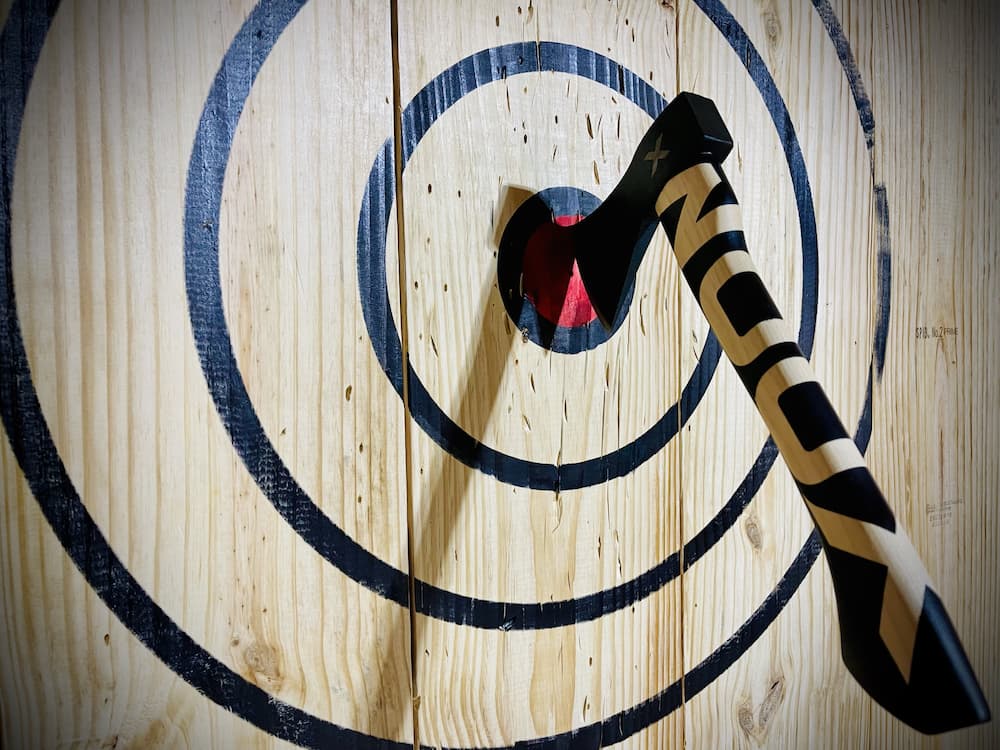Axe Throwing Denver Carbon Monoxide: Enjoyable for Everyone, from Pals to Family members
Axe Throwing Denver Carbon Monoxide: Enjoyable for Everyone, from Pals to Family members
Blog Article
The Fun of Axe Throwing: How This Sport Combines Skill and Adrenaline for a Blast
Axe throwing has actually emerged as an astounding sport that masterfully links the requirement for precise ability with the thrill of adrenaline, offering individuals a one-of-a-kind and interesting experience. The act of tossing an axe in the direction of a target requires concentration and technique, at the same time cultivating an atmosphere of friendship and pleasant rivalry.
The Beginnings of Axe Throwing
Axe tossing, a leisure task that has actually gotten considerable popularity in recent years, traces its origins back to ancient times. The earliest documents of axe use in competitive contexts are located amongst the Celts and Vikings, that tossed axes for sporting activity as well as in fight training.
Middle ages European warriors, especially during the Center Ages, practiced axe throwing as component of their martial training. The Francisca, a type of tossing axe utilized by the Franks, came to be iconic for its fatal precision. This standard tool was developed to be tossed at adversary guards and armor, showcasing its double utility in both sporting activity and battle.
In even more recent history, axe throwing saw a rebirth in the logging camps of North America in the 19th and 20th centuries. Lumberjacks would certainly involve in pleasant competitors, checking their accuracy and stamina by targeting at wood targets. This evolution from a survival skill to a leisure activity has actually led the way for its contemporary rebirth, with committed venues and organizations now commemorating the sporting activity around the world.
Tools You Need
Recognizing the abundant history of axe tossing enhances the gratitude of the sporting activity's modern iteration. Central to this thrilling task is the tools, which is crucial for both security and performance. The main device is, certainly, the axe. For leisure and competitive axe throwing, the most generally utilized type is the hatchet, normally evaluating in between 1.25 to 2 pounds with a deal with size of about 16 inches. The axe should have a sharp, well-kept blade and a deal with made from sturdy timber or composite product, making certain a good grip and equilibrium.
Equally vital is the target. Guideline targets are created from wood, with softwood selections like pine or cottonwood being favored for their ability to hold the axe and soak up. The target is typically divided right into five concentric circles, each with a particular factor value, to facilitate rating.
Safety and security gear, however frequently ignored, is critical. Protective handwear covers can boost hold and stop sores, while closed-toed shoes are a should to shield feet from dropped axes (ax throwing denver). Lastly, a well-lit, spacious throwing location, complete with safety barriers, ensures a controlled environment where individuals can concentrate on developing their abilities.
Standard Techniques Discussed
Mastering the fundamental techniques of axe throwing is essential for both security and proficiency. The initial strategy to understand is the hold. Hold the axe with a company, yet loosened up hold, similar to holding a Resources golf club. The dominant hand ought to be placed directly below the axe head, while the non-dominant hand supports the end of the take care of.
Following, concentrate on the stance. Stand with your feet click to find out more shoulder-width apart, ensuring your body is balanced. Your dominant foot needs to be a little ahead, aligning with your target. This positioning aids in maintaining security and directing power precisely towards the target.

Security First
Making certain safety and security in axe throwing is paramount to developing an injury-free and pleasurable experience. A well-designed axe throwing facility functions clear demarcations in between throwing lanes, sturdy backdrops to capture stray axes, and non-slip flooring to protect against mishaps.
Benefits of Axe Throwing
Axe browse around here tossing offers a myriad of advantages that expand beyond easy recreation. The recurring movement of throwing the axe additionally enhances hand-eye sychronisation and great electric motor skills.
Emotionally, axe tossing requires technique, emphasis, and precision, making it a superb way to sharpen cognitive skills. The focus required to strike the target can serve as a type of mindfulness, allowing individuals to remove their minds and minimize stress. This mental involvement can be especially beneficial in assisting individuals create much better analytical skills and psychological strength.
Socially, axe throwing is frequently enjoyed in team settings, promoting team-building and camaraderie. Whether as part of a business event or a casual outing with good friends, the sport urges communication and partnership. Furthermore, the public experience of finding out and boosting together can enhance relationships and produce long-term memories.
Final Thought

The earliest records of axe usage in affordable contexts are discovered amongst the Celts and Vikings, who threw axes for sporting activity as well as in battle training. Release the axe when your hands are approximately at eye degree, enabling the axe's natural turning to guide it in the direction of the target.
A well-designed axe throwing facility functions clear separations in between tossing lanes, sturdy backdrops to capture roaming axes, and non-slip floor covering to prevent mishaps. Participants need to be advised on the proper method to take care of and throw the axe, stressing regulated, intentional movements over powerful tosses.
In recap, axe tossing stands out as a sporting activity that masterfully incorporates adrenaline, skill, and accuracy.
Report this page